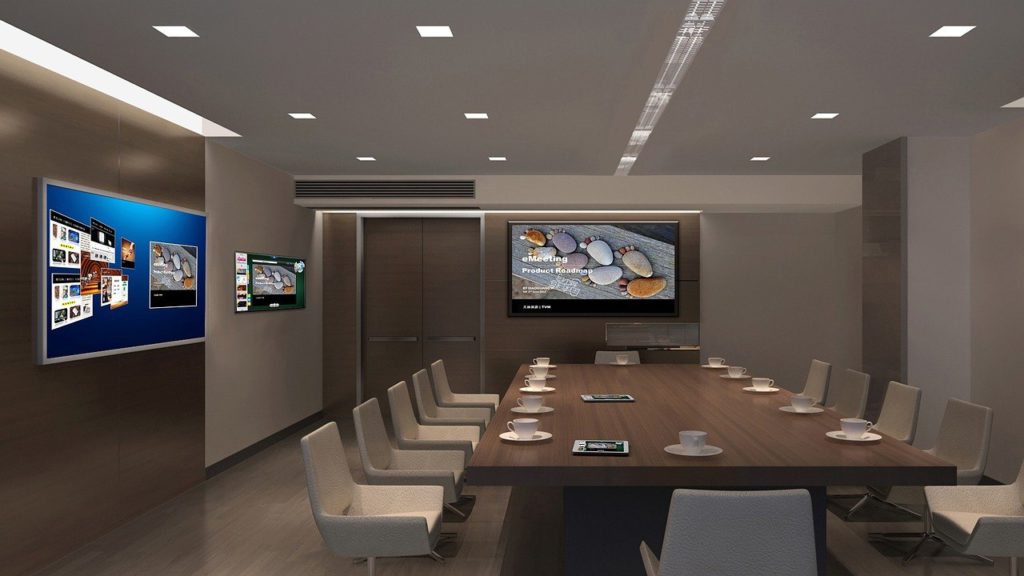We would also like to invite you to explore our new office and hybrid work resources here. We’re here to help you think about your post-COVID-19 office space and how to create a new office layout, so your employees feel safe whether they’re helping you directly or connecting you with our trusted Schrimmer partners…Design Group with Lebel and Balian. In this guide, we explore current office functions post-pandemic and how forward-thinking companies are creating a new paradigm through technology-enabled design to transform their workplaces into spaces for social interaction and collaboration.
The office is slowly evolving into a space for collaboration and problem solving, and the design must change to keep up with the new trend. As the office becomes a different space that must meet the changing needs and attendance of employees, new trends in office design are emerging to meet these needs. The decisions that office designers make when choosing furniture and layout will have a significant impact on how these spaces can be used to meet the new demands of the post-COVID workplace.
We can expect an increase in the number of collaborative jobs and a decrease in the number of individual jobs. This will continue to steer workplace design trends towards collaboration spaces.
As more and more companies start to think about their employees and how they interact with their space, nicer workplaces and office interior design are starting to emerge. Recent trends in workplace design are moving away from the purely aesthetic towards a new and exciting combination of beauty and functionality. Many projects today are focused on increasing employee engagement and productivity by optimizing collaboration, focus, and efficiency in response to their changing needs.
In previous years we focused on how to make the physical workplace a better place to work, but this year we will take a more holistic look at the changing nature of work and how we think this will impact office and workplace design. in a broad sense. It’s no surprise that our collective thinking on office design trends for 2021 in this strangest of years tends to focus on how the workplace is adapting to a post-coronavirus environment, and the push for a more hybrid way of working involving modular homes. . and office workers.
Reflecting on what has happened in the past 12 months, architects around the world are reinventing the look and feel of the office as the new year approaches. Trends are predicted that new commercial design, video conferencing, workplace neighbourhoods, design-oriented divisions and sustainability will play a key role in office 2021.
In addition to adhering to OSHA and CDC guidelines, businesses and organizations are rethinking the interior design and layout of their office space to provide a safe and secure workplace. Many offices are starting to focus on urban space planning when designing their layouts. Employees may prefer non-standard workspaces, floor plans, or clear plastic screens, whatever that is, the office design must be ready to meet the user’s needs.

Safe outdoor spaces are critical to maintaining mental and physical health so that employees feel connected to the places where they spend their time, according to a study of outdoor jobs by executives in commercial real estate. Using open spaces to create areas of communication and collaboration offers more opportunities for a safer work environment.
Flexible spaces make it easy to adapt to the changing needs of employees, projects and companies. It is the ideal solution for a fast-paced world where many important positions did not exist five years ago and where companies find it difficult to predict what roles they will need in the coming years.
The proximity of people to the technique of meeting in open spaces should correspond to the provisions of closed spaces. Open offices, multipurpose spaces, common areas and teleworking require flexible technologies. As more and more companies begin to understand this, and as more and more people start working from home and elsewhere, they feel more comfortable, the needs and design of offices begin to change. It is no longer employees and potential employees who simply work in universal spaces, but rather workspaces are designed for the emergency needs of the business, to increase productivity and productivity, attract new talent, improve welfare and well-being, and inspire new ideas.
This raises the question of how workplace design will adapt to this ever-changing nature of people’s work. The way we work is changing, and customs offices with unique layouts can help brand your business, encourage employees to think outside the box and open up new profit opportunities. While designing office space suitable for use in a pandemic presents many challenges, it is also a great opportunity to get creative when designing safe and welcoming spaces for employees.
A recent study by Webbs examines the habits of new Generation Z employees and finds that these young professionals value mobile workplaces, personal spaces when they need to, open spaces for teamwork and face-to-face communication. As more and more people move towards flexible and collaborative workspaces, experts say, they will prioritize those that provide the sense of community traditionally offered by businesses.
Since employees remain remote to work on individual projects, the office will be used for collaboration and social aspects. The post-pandemic office will become a cultural space, providing employees with a social anchor, fostering learning, facilitating communication, and fostering innovative, unconventional collaboration.
